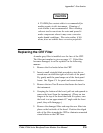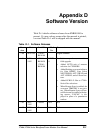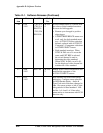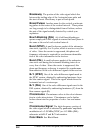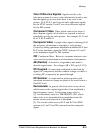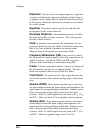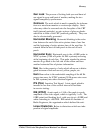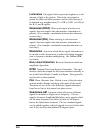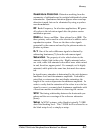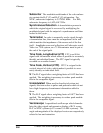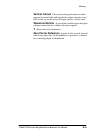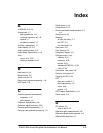
Glossary
G-4
1740A/1750A Series Waveform/Vector Monitor User Manual
Distortion If a sine wave of a single frequency is put into
a system, and harmonic content at multiples of that frequen-
cy appears at the output, there is harmonic distortion present
in the system. Harmonic distortion is caused by non--lineari-
ties in the system.
Equalizer The pulses which occur before and after the
broad pulses in the vertical interval.
Envelope Detection A demodulation process in which
the shape of the RF envelope is sensed. This is the proc ess
used by a diode detector.
Field In interlaced scan systems, the information for one
picture is divided up into two fields. Each field contains one
half of the lines required to produce the entire picture.
Adjacent lines in the picture are in alternate fields.
Frequency Modulation (FM) is the process by which
the frequency of a carrier signal is varied in proportion to the
signal of interest. In both the NTSC and PAL television
systems, audio information is transmitted using FM.
Frame A frame (sometimes called a ”picture”) contains all
the information required for a complete picture. For inter-
laced scan systems, there are two fields in a frame.
Front Porch The portion of the video signal between the
end of active picture time and the leading edge of horizontal
sync.
Gamma (NTSC) Since picture monitors have a non--lin-
ear relationship between the input voltage and brightness, the
signal must be correspondingly predistorted. Gamma correc-
tion is always done at the source (camera) in television
systems: the R, G, and B signals are c onverted to R
1
/
V
,G
1
/
V
,
and B
1
/
V
. Values of about 2.2 are typically used for ga mma.
Gamma (PAL) Since picture monitors have a non--linear
relationship between the input voltage and brightness, the
signal must be correspondingly predistorted. Gamma correc-
tion is always done at the source (camera) in television
systems: the R, G, and B signals are c onverted to R
1
/
V
,G
1
/
V
,
and B
1
/
V
. Values for gamma range from 2.2 to 2.8.



